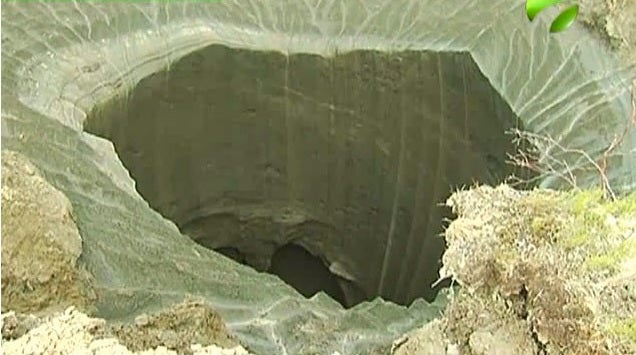Video: Team reaches the giant Siberian hole at 'the end of the world'
The depth of the pit is still unconfirmed

Your support helps us to tell the story
From reproductive rights to climate change to Big Tech, The Independent is on the ground when the story is developing. Whether it's investigating the financials of Elon Musk's pro-Trump PAC or producing our latest documentary, 'The A Word', which shines a light on the American women fighting for reproductive rights, we know how important it is to parse out the facts from the messaging.
At such a critical moment in US history, we need reporters on the ground. Your donation allows us to keep sending journalists to speak to both sides of the story.
The Independent is trusted by Americans across the entire political spectrum. And unlike many other quality news outlets, we choose not to lock Americans out of our reporting and analysis with paywalls. We believe quality journalism should be available to everyone, paid for by those who can afford it.
Your support makes all the difference.A mysterious 80m wide crater discovered in Siberia left the world baffled yesterday, with initial speculative explanations ranging from the sensible (possibly a below-ground explosion?) to the ridiculous (obviously it's a Sarlacc Pit).
Well now man has reached it, with a scientific expedition including a representative from Siberia's Emergencies Ministry heading to the hole to investigate.
A Russian news report on the visit has yielded better images of the crater, showing rocks tumbling into it as researchers take samples.
A meteorite has been ruled out as the cause of the hole, with the state of the earth around the edge of it pointing to a possible past explosion.
It sits around 1,800 miles east of Moscow in a barren permafrost stretch of Yamal, an area that translates as "the end of the world".
The region is key in Russia's oil and gas production, lending weight to the explosion theory, though a 28 inch layer of permafrost mentioned in the video is puzzling given the amount of heat that would have produced with a blast of that size.
Members of the Russian Academy of Sciences are said to be collecting soil, air and water samples around the hole, which has an inner diameter of 130 feet – though its depth is unknown.
Anna Kurchatova, from the Sub-Arctic Scientific Research Centre, told the Siberian Times global warming could be a cause.
She believes the hole was formed by a mixture of water, salt and gas, igniting an underground explosion.
The gas had accumulated in ice mixed with sand beneath the surface of what was a sea 10,000 years ago, and ignited when the permafrost melted “like popping a champagne bottle”, she claimed.
If her analysis is correct, another explosion could have worrying implications for the many underground gas pipelines running through the region.
Join our commenting forum
Join thought-provoking conversations, follow other Independent readers and see their replies
Comments